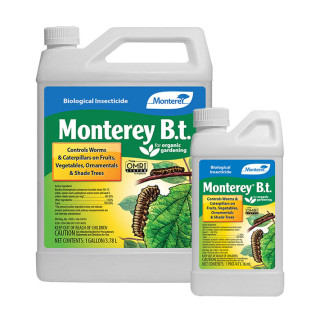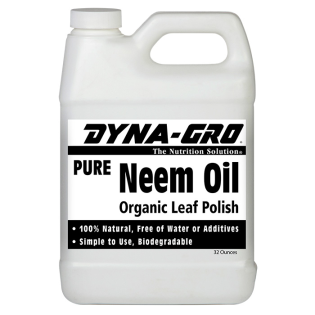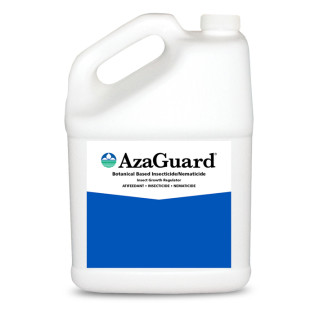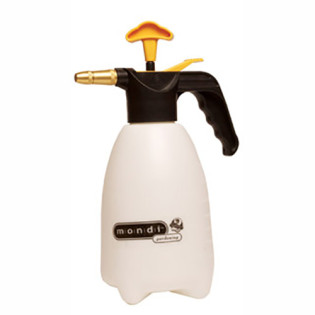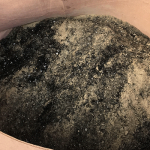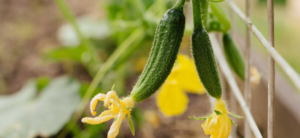
No matter what you are growing in your garden it’s important for you to learn how to get rid of cabbage worms on your plants quickly should they infest.
Although the name implies that cabbage worms feast on cabbage plants alone, the reality might surprise you.
These pests feed voraciously on a variety of plants, leaving behind a wake of destruction in the form of small, nibbled holes.
Fortunately, if you’ve stumbled upon this article, you’re in the right place. Here’s everything you need to know about how to get rid of cabbage worms on plants - fast.
What Are Cabbage Worms?
Cabbage worms are small green larvae. Technically, they are the larval stage of adult butterflies known as small whites or cabbage whites.
Known scientifically as Pieris rapae, these pests feast on all manner of plants in the brassica family.

However, they most commonly go after plants such as kale, cauliflower, broccoli, and of course, cabbage and all other members of the cabbage vegetable family.
A common garden pest, the cabbage worm can also feed on plants during any season. The good news is that cabbage worms normally don’t pose too much of a threat unless they feed on your plants when they are pushing out their first heads or developing as seedlings. They love fresh, new growth.
Left unaddressed, a cabbage worm infestation can pose serious problems to commercial and hobby growers alike. Just one or two cabbage worms is all it takes to completely kill or defoliate a plant.
They will feed hungrily on the foliage of your plants and can eventually defoliate the plants entirely, leaving the leaves with only large veins and a few stems.
Not only that, but the droppings that cabbage worms leave behind are unsightly and can contaminate your produce. But how do you tell these apart from other types of caterpillars?
How To Identify Cabbage Worms
Cabbage worms have small yellow stripes and look similar to cabbage loopers but are separate species. In fact, the only way to reliably tell the two apart is to watch them move.
Cabbage loopers lower and raise their small bodies as they move along, since they have no middle legs - cabbage worms do not do this.

These pests will hang out anywhere on your plants that they please. Often, you’ll find eggs or larvae of other pests with them, such as those from zebra caterpillars or diamondback moths.
You might also find the fecal matter left behind. Unfortunately, cabbage worms can sometimes be tough to identify because they are so well camouflaged.
Cabbage worms will go after all kinds of plants besides cabbage, including broccoli, cauliflower, collards, kale, Brussels sprouts, radishes, turnip greens, and more.
How To Prevent Cabbage Worms In The First Place
Preventing cabbage worms in the first place will save you a lot of effort and frustration, which comes with an infestation.
You may want to cover your plants with row covers, occasionally removing the covers to provide pollinators with access to your plants if necessary. Applying row covers will make it impossible for adult butterflies to lay their eggs on the plants.

Companion planting is another effective strategy that can help keep cabbage worms out of the garden. These pests are often repelled by thyme and other herbs, so planting these near your vulnerable plants can help keep cabbage worms at bay.
Similarly, you can companion plant using “trap crops.” Trap crops are those that draw cabbage worms in, acting as a lure that will distract the worms from your more desirable plants. One common trap crop you can grow is mustard.
Finally, consider planting varieties of cabbage and other plants that are less vulnerable to cabbage worm damage.
For instance, red-leaved varieties of cabbage are less susceptible to infestation, since the cabbage worms can’t camouflage as well and will easily be picked off by birds and other predators.
How To Get Rid Of Cabbage Worms In The Garden
Sometimes a pest outbreak is out of your control, depending on climate, location, time of year, and good old chance.
Should your prevention methods fall short, don’t worry. We are going to teach you how to get rid of cabbage worms on your plants now!
Manually Remove Cabbage Worms
Vigilantly plucking cabbage worms and their eggs from your plants may not sound like a good time to you.
But if you want to really get on top of an infestation, this might be what you need to do.
If you know that you have a problem with cabbage worms in your garden, take the time to go through and pluck the eggs or cabbage worms themselves from your plants when you see them.
Drop each one into a bucket of soapy water, which should kill them instantly. It may take some time for you to get on top of your infestation with this technique, but over time, your efforts will pay off.
Dry Them Out
There are several ways you can desiccate the cabbage worms that are giving you grief, too. Some old-time gardeners search by sprinkling cabbage leaves with cornmeal.
Supposedly, this will cause the worms to eat the cornmeal, swell up, and then die. A similar technique involves sprinkling rye flour over plants, ideally first thing in the morning.
It should dry the worms out so that they will die on the spot - then you can just flick them off!
Diatomaceous earth is one of the best defences against cabbage worms. Opt for food-safe diatomaceous earth, which will target cabbage worms as well as a wide assortment of other garden pests.
When applied to your grow media, it will effectively kill any bugs crawling around.It’s nontoxic to humans and instead works to dry out the body of any soft-bodied insect.
Introduce Some Beneficial Bugs
You can also introduce some beneficial bugs to the garden. There are several kinds of pests that go after cabbage worms, but one of the most common is the Trichogramma wasp.

This tiny wasp does not sting humans but instead acts as a parasite to the eggs of the cabbage worm.
You can buy the insects and have them delivered right to your door, but you’ll want to time the release appropriately (this can vary depending on where you live).
Spray Neem Oil
Neem oil is another common treatment for cabbage worm infestations, but the key to controlling a cabbage worm problem with neem oil is to use it as a preventative only - rather than as a measure of control.
That’s because routinely spraying your garden with neem oil makes the plants less attractive to pests, but won’t kill cabbage worms on contact.
Therefore, if you are worried about cabbage worms or other pests becoming a problem, you may want to get in the habit of spraying with neem oil before an infestation actually sets in.
We have an entire guide on how to use neem oil if you are interested in learning more about this organic, natural pest control method.
How To Kill Cabbage Worms With Insecticides
Insecticides might not be your preferred method of control when it comes to getting rid of cabbage worms, but sometimes, you have to fight fire with fire.
Fortunately, you don't have to resort to synthetic insecticides to get rid of cabbage worms, although this is an option if you choose.
There are plenty of other more natural solutions you can try first, though.If you decide to use a synthetic pesticide, be sure to check with your local cooperative extension first.
You’ll want to make sure you are in compliance with your area’s regulations on chemical insect control.
Use Pesticides Containing Bacillus Thuringiensis Or Spinosad
Don't just use any insecticide on the market. Rather, look for one containing one of two (or both) key ingredients: Bacillus Thuringiensis (B.t) or Spinosaid.
By taking the time to spray your plants with Bt, or Bacillus thuringiensis, once every week or two, you can eliminate nasty pests in your garden - cabbage worms included.
This is a natural treatment that will help get rid of cabbage worms by targeting them in the soil. It’s easy to apply, particularly when you choose a concentrated version.
You can apply it once every one to two weeks and it will control all cabbage family pests.
Spinosad, on the other hand, is a product that’s isolated from naturally-occurring soil-dwelling bacteria. It's incredibly effective at controlling soft bodies pests, such as cabbage worms.
Monterey Lawn & Garden B.t. Concentrate
If you aren’t sure what to look for, you might want to give the Monterey Lawn & Garden B.t. Concentrate on trying. It’s an effective solution that’s available in several sizes.
This particular insecticide is hard on pests but easy on the environment, including birds, earthworms, and other beneficial bugs. It's OMRI listed, meaning it's tested to the strictest standards and deemed organic.
Better yet, it can safely be used on your plants up until harvest day!
Safer Brand Caterpillar Killer Concentrate
Not sure whether it’s cabbage worms or some other caterpillar or worm-like species that are decimating your crops? If so, you may want to consider the Safer Brand Caterpillar Killer Concentrate.
This insecticide is one of the most convenient and economical methods of dealing with caterpillars and worms of all kinds, including corn earworms, tomato fruitworms, hornworms, armyworms, and of course, cabbage worms.
It uses Dipel, which is a strain of Bacillus thuringiensis that is ingested and then kills worms within just a few days.
Bonide Captain Jack's Deadbug Brew
You may want to give Bonide Captain Jack's Deadbug Brew Concentrate a try.
This product is made of Spinosad first collected on a Caribbean island from an abandoned rum distillery, hence the fun name!
It is effective against all manner of pests, including beetles, gypsy moths, loopers, and cabbage worms. And, its safe to use on just about any plant or tree you can imagine!
Final Thoughts On How To Get Rid Of Cabbage Worms
Fighting cabbage worms in the garden doesn’t have to be an uphill battle. When you arm yourself with the right tools and knowledge of how to deal with these creepy-crawly pests, you’ll be able to create a plan of action that will get them gone for good.
Being aware of the signs of an infestation is the first place to start - then, consider giving one of these remedies a try to get rid of cabbage worms on plants - fast.
If you want to learn more about keeping your garden infestation-free, check out our guide on the common pests & diseases you may encounter!







